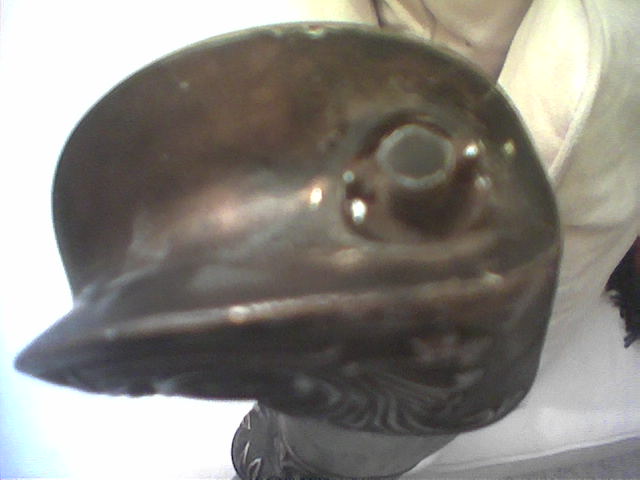
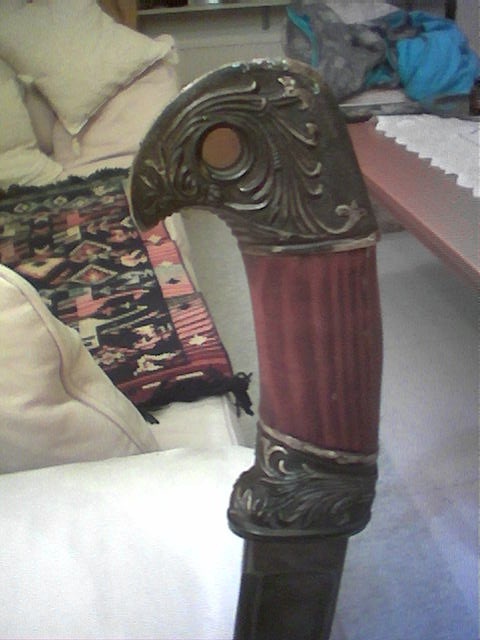
[ Download ]
[ Download ]


| Jean Thibodeau wrote: |
| Interesting sword type as well: I wonder why and to what advantage that this type has no guard to speak of ? Traditional with the Cossacks and I guess to keep it a Cossacks sword when adopted by the Russian they didn't decide to change it and add a guard. This I would guess to keep it associated to The Cossacks' reputation as fierce fighters. :?: |
| Timo Nieminen wrote: |
| By the late 1800s, and into the 1900s, what use is a sword guard? (You could also ask as to use a sword was for cavalry by that time - Australian Light Horse didn't take swords when they went to fight in WW1 (their famous charge at Beersheba being with bayonets in hand).) May as well be traditional. |
| Lafayette C Curtis wrote: | ||
The Australian Light Horse eventually realized the usefulness of swords and scrounged them up from any source they could find, however |
| Lafayette C Curtis wrote: |
| and even the German invasion of Poland where cavalry sabers still proved to be an effective weapon (in the last case when Polish cavalry made surprise attacks against infantry columns left behind by the mechanized spearheads). |
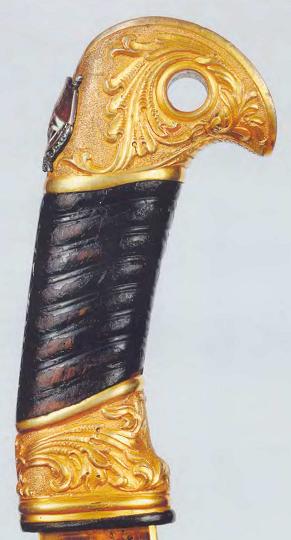
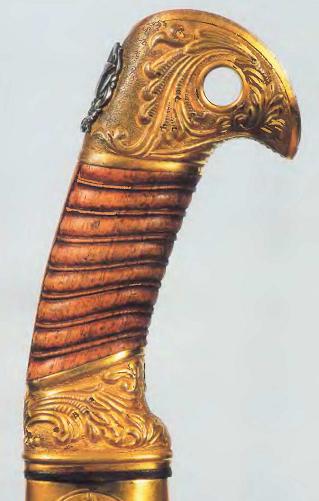
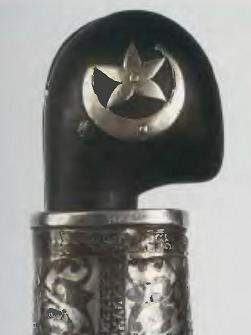

| Timo Nieminen wrote: | ||||
Must be time for the Real Story! All of the above is a little misleading - the key point being that the ALH was not cavalry, but mostly mounted infantry... (snip for brevity) A nice account is to be had in J. Bou, Journal of Military History 71, 99 (2007) (and 3 other papers on cavalry of that era in the same issue). |
| Quote: |
| That the cases when sabres were genuinely useful are notable exception says a lot about their general usefulness. At such a point, if you're going to have the men carry them about, sabres without guards are at least easier to carry and wear. You'll only miss having guards if you get into cavalry versus cavalry, sword versus sword, and the wise cavalry units will use their MGs instead (like the Polish lancers were wise enough to use their anti-tank guns against German armour during the German attack).
Some of the late cavalry charges were with pistol or carbine in hand, rather than sword or lance, but the Savoia regiment charged with sabres in hand in August 1942, on the Eastern Front. They used captured shashkas (in addition to their own Italian swords). |
| Lafayette C Curtis wrote: |
|
Quite true. But note that I'm not arguing for against the use of knuckle-guards on swords--only that the cavalry sword continued to be an effective weapon for much longer than people believed. ... Therein lies my contention against your statement of "You could also ask as to use a sword was for cavalry by that time." It might no longer be the cavalry's primary or preferred weapon but it still proved quite handy in a large number of cases, and wise cavalry commanders still allowed/required their units to keep swords for those times when the suddenness and momentum of cavalry shock action could still prove decisive in the absence of a better mobile assault arm (i.e. armored or mechanized units). |
